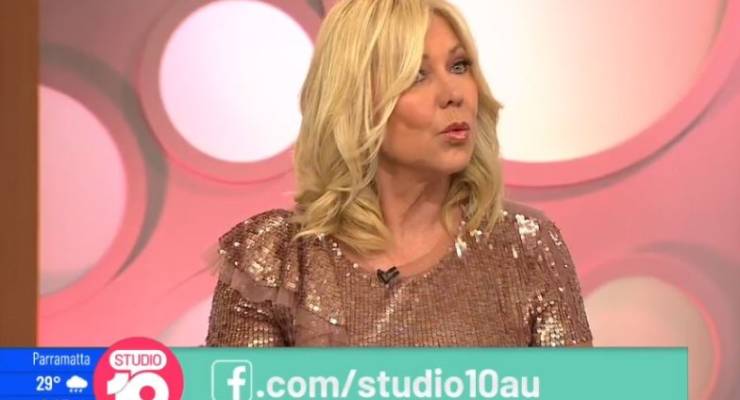
A yearly print subscription to Meanjin is just $100, including postage. What’s more, subscribe before July 1 to get your free Meanjin KeepCup!
If you want to know the difference between the Black and White Witness, all you have to do is mention the war. The White Witness will often describe it in this way.
In 2004, Palm Island was continually referred to as the “most dangerous place on Earth outside of a conflict zone”, following the tragic death in custody of Mulrunji Doomadgee (who died on a watchhouse floor, with a liver cleaved in two and injuries akin to those of a plane crash victim).
In 2015 the Cape York community of Aurukun was labelled ground zero, with ‘clashes between warring families … Forcing terrified locals to flee for their safety’, and ‘children (who) were now caught in a warzone’.
The same was said of Wadeye, thousands of kilometres away in north-east Arnhem Land, which in 2006 was labelled “Not the Third World, just Australia’s first war zone” with “scores of Aborigines” “fleeing their homes” and “living in squalid refugee-like camps” due to “gang violence”. In 2013, The Sydney Morning Herald manipulated crime statistics to claim that the far-west NSW town of Bourke, with its large Aboriginal population, was “the most dangerous place on Earth”.
In this telling, the White Witness becomes a war correspondent, reporting on the civil war between black and black. He or she is the credible observer who has ventured from the borders of respectability to the borderlands of “out there”, most commonly remote Australia, where blackness is seen as savage and violent, and the victims are given no voice, no agency, no humanity. This is the war the White Witness will tell you about, one focused on dysfunction and hopelessness, and told with the veneer of impartiality, because to tell it like this is to ensure the White Witness is only the correspondent, and never an active player.
The White Witness will not tell you about the other war, or if they do they will tell you it ended a long time ago. They will tell you it had no consequences for the present, and so the violence they are reporting on becomes biological, somehow innate to the Aboriginal race, or cultural — a practice formed over tens of thousands of years, before white people even arrived.
***
In January, one of these white witnesses, Kerri-Anne Kennerley, appeared on Channel Ten’s morning Studio 10 program. The topic of the day was the January 26 protests, in which tens of thousands of Aboriginal people and allies shut down the Melbourne CBD to protest over a day that, for blackfellas, has always represented invasion and genocide. The TV panel had no Aboriginal representative, and only one person of colour, Yumi Stynes.
Kennerley, whose credentials include being white and on television, launched a diatribe, echoing the war correspondents who have gone before her:
Has any single one of those 5000 people waving the flags saying how inappropriate the day is, has any one of them been out to the outback where children, where babies and five-year-olds are being raped, their mothers are raped, their sisters are raped. They get no education. What have you done? Zippo.
On each repetition, Kennerley stressed the word “raped’, and finished with her fingers in a makeshift cross, as if to ward off evil spirits, while the rest of the panel stayed silent. It was only Stynes who spoke up, completely measured: ‘That is not remotely true, Kerri-Anne, and you are sounding quite racist right now.”
Despite Kennerley’s offensive, self-righteous and, quite frankly, racist attack on Aboriginal people as a whole, it was Stynes’ words that were met with outrage by the audience, and by Kennerley who painted herself as the victim, as white women have historically been wont to do.
This is an edited extract. To read the whole piece, go to Meanjin.








No comments so far….I guess everyone is scared to say anything on this topic.
I know Bourke and some of the towns on that highway.
Bourke shuts down at 8.00pm every night. There are 3 or 4 places to get a feed if you are a visitor – inside well protected pubs and the RSL Club. All the shopfront businesses have industrial strength steel roller shutters down and padlocked.
Small groups of Indigenous kids (as young as 6 years old) roam the streets making lots of noise, and the occasional old Falcon or Holden roars from one end of town to the other and spills out a few older Indigenes who noisily hang out on the street corners until they roar off to the other end of town.
Up the road at Brewarrina are the famous Barwon River fish traps. There are 1905 photos of these clever stone traps in working order in the shabby cultural centre 20m from the high river bank.
One can walk down to the river through a hole in the fence and find a strange carpet of even cobblestones stretching 5m or more into the broad reach of the river. On walking in you soon realize these greenish brown smooth things are the heels of thousands of beer bottles thrown into the river over years and coated with mud and slime. The fish traps are recognizable but don’t seem to trap fish any more.
You will find the same pattern of town life in all the towns out to Broken Hill. The white farmers and businessmen, buy their cartons and go home shaking their heads and shutting up about the situation, knowing that nothing has ever worked while the welfare system supports and entrenches these Indigenous social patterns.
I get your point where it comes to a woman like Kennerley who frankly is scrambling to show her non PC, Alt right credentials to prospective Sydney radio stations…she’s got to keep that fridge stocked with Moet.
However, when you then add your own little bit of stupidity into the mix by saying: “and by Kennerley who painted herself as the victim, as white women have historically been wont to do.”
You simply play into the hands of people like the awful Kezza by being “offensive, self-righteous and, quite frankly, racist”
I don’t think the final sentence is meant in the way you’ve interpreted it. My take on it (and the accompanying photo seems to support this) is that white women are used strategically to elicit sympathy for the white colonialists’ cause of eradicating indigenous peoples and/or voices from Australian discourse. Kennelly’s studio situates her within a feminine pastiche, pink and yellow pastels aggressively signal her membership to a gender of passivity, all innocent and helpless. Don’t let the conservatives’ cliched brand of womanhood fool you.
There were several things wrong with Kennerley’s diatribe – the worst of which was painting a fairly complex issue of intergenerational trauma and dispossession in simplistic, racially-charged ways. Without an indigenous person there to give voice to a non-white perspective, a white woman going on about it as if it doesn’t also happen (at epidemic levels) in white society was distasteful and racist in the extreme. Yumi was right to call her out for it. It does us no good to pretend that we white women don’t engage in a fair swathe of indignation at being called out for problematic behaviour.
But Kerri-Anne also commits another logical fallacy that the right is often wont to do. Her response to being called out was likewise typical. Namely the assertion that because a group of people are engaging in one type of activity – city-based protest – that they are therefore not doing anything else. The likelihood that out of 5000 people who care enough to shut a city down there were none who actively work with indigenous communities in any other way shape or form is blatantly absurd. Particularly given a very many of them would have been Indigenous people themselves. How dare Kerri-Ann – who herself has done nothing on this issue – accuse others who are doing something of not doing enough. When whites use issues of intergenerational trauma – which only exist BECAUSE white Australia exists – to try to wedge the politics and as a weapon against Indigenous communities, then that should be called out often and loudly.
This is part of a wider problem of Australian media- it is still generally quite unrepresentative of our diverse society, leading to the repeated phenomenon of people of Anglo-Celtic background pontificating on the lives of others, rather than having a diverse representation of people who may have experienced the issues discussed first hand. This is always most painful to watch on indigenous issues. Have we not progressed beyond white paternalism or worse?